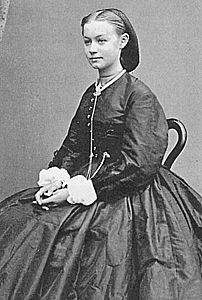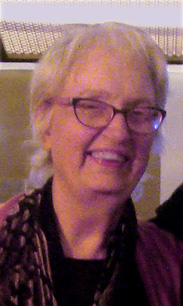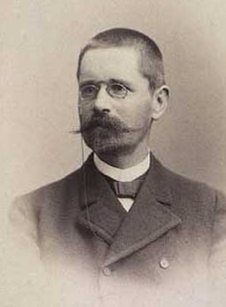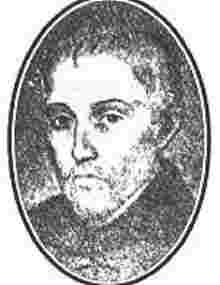Nicolas Gombert was a Franco-Flemish composer of the Renaissance. He was one of the most famous and influential composers between Josquin des Prez and Palestrina, and best represents the fully developed, complex polyphonic style of this period in music history.

Johann(es) Simon Mayr, also known in Italian as Giovanni Simone Mayr or Simone Mayr, was a German composer. His music reflects the transition from the Classical to the Romantic musical era. In 1805 he founded the Bergamo Conservatory. He was an early inspiration to Rossini and taught and advocated for Donizetti.

Agathe Ursula Backer Grøndahl was a Norwegian pianist and composer. Her son Fridtjof Backer-Grøndahl (1885–1959) was also a pianist and composer, who promoted his mother's compositions in his concerts.
Bent Lorentzen was a Danish composer. He was one of the outstanding figures in contemporary Danish music. His works are frequently performed at festivals at home and abroad, and he had established particularly close links with musical life in Poland and Germany. He was honoured with several international prizes and was named Choral Composer of the Year in Denmark in 1989.

Kim Mellius Flyvholm Larsen was a Danish rock and pop musician. He was a major selling Scandinavian act with over 5 million albums sold.

Michael John Hurd was a composer, teacher and author, principally known for his dramatic cantatas for schools and for his choral music.
Capilla Flamenca is a vocal and instrumental early music consort based in Leuven, Belgium. The group specialises in 14th to 16th century music from Flanders and takes its name from the historical Flemish chapel, the choir of the court chapel of Emperor Charles V. When the emperor left Flanders in 1517, he took his best musicians with him to Spain to accompany him as "living polyphony".
Carsten Bo Eriksen alias MBD73 which is short for My Beautiful Decay 1973 is a Danish 21st-century composer and artist.

Birgitte Alsted is a Danish violinist, teacher and composer.
Bo Holten is a Danish composer and conductor.
Werner Knudsen in Ringsted) is a Danish computer scientist, composer and author of both choral music and IT books. He is an IT architect at IBM and used to work at TDC A/S. He lives in Glostrup close to Copenhagen.

Thomas Linnemann Laub was a Danish organist and composer. He was associated with the 20th century revival of religious music in the country.
Mogens Pedersøn was a Danish instrumentalist and composer. He is considered the most important Danish-born composer before Buxtehude.
The Capilla Peñaflorida is a Spanish early music group founded in 1985 by Jon Bagüés.
Ars Nova Copenhagen is a Danish vocal ensemble based in Copenhagen. The ensemble specialises in the interpretation of the polyphonic choral music of the Renaissance and new vocal music.
Musica ficta is a Latin musical term for 'feigned music'.
Dacapo Records is a Danish classical music and new music record label. It was founded in 1989 to promote the classical and new music of Denmark and represents itself as "the Danish National label". The board includes university and Danish Radio appointees. Dacapo also produces jazz and experimental music.
The Cancionero de Segovia or Cancionero Musical de Segovia (CMS), also known as Cancionero of the Segovia Cathedral, is a manuscript containing Renaissance music from the end of the 15th century and beginning of the 16th century. It contains a wide repertoire of works by mainly Spanish, French and Franco-Flemish composers. It is kept at the Segovia Cathedral Archives.

The Oxford Camerata is an English chamber choir based in Oxford, England. The Camerata was founded in 1984 by conductor Jeremy Summerly and singers David Hurley and Henrietta Cowling and gave its first performance on 22 May of that year. The ensemble consists of a core membership of fifteen singers, though personnel size varies according to the demands of the repertoire. While the Camerata is known for performing primarily unaccompanied repertoire, it has also performed accompanied repertoire, employing the services of the Oxford Camerata Instrumental Ensemble and the Oxford Camerata Baroque Orchestra.

Popule meus is a motet for Good Friday by Tomás Luis de Victoria. He set a liturgical text from the Improperia, which contains the Greek-Latin Trisagion, prescribed for use in the Catholic responsory for Good Friday. It begins "Popule meus, quid feci tibi?". The composition, scored for four voices, SATB, was published in Rome in 1585 in Officium Hebdomadae Sanctae.







